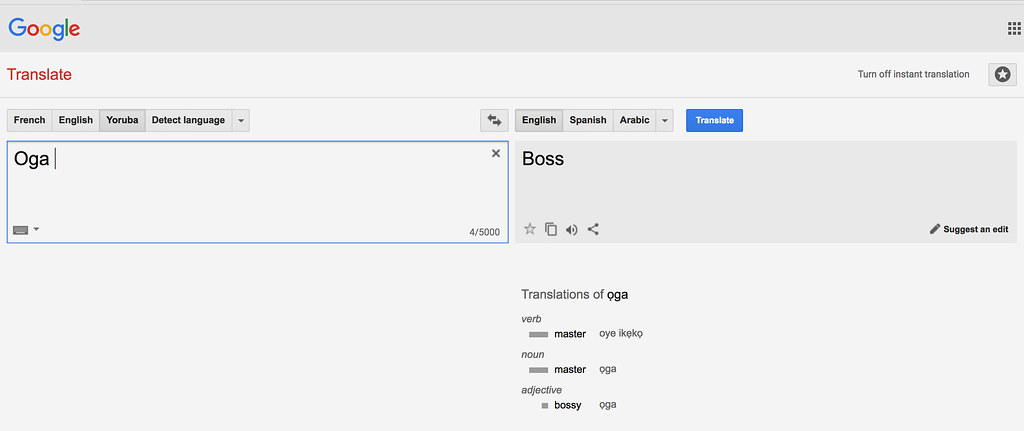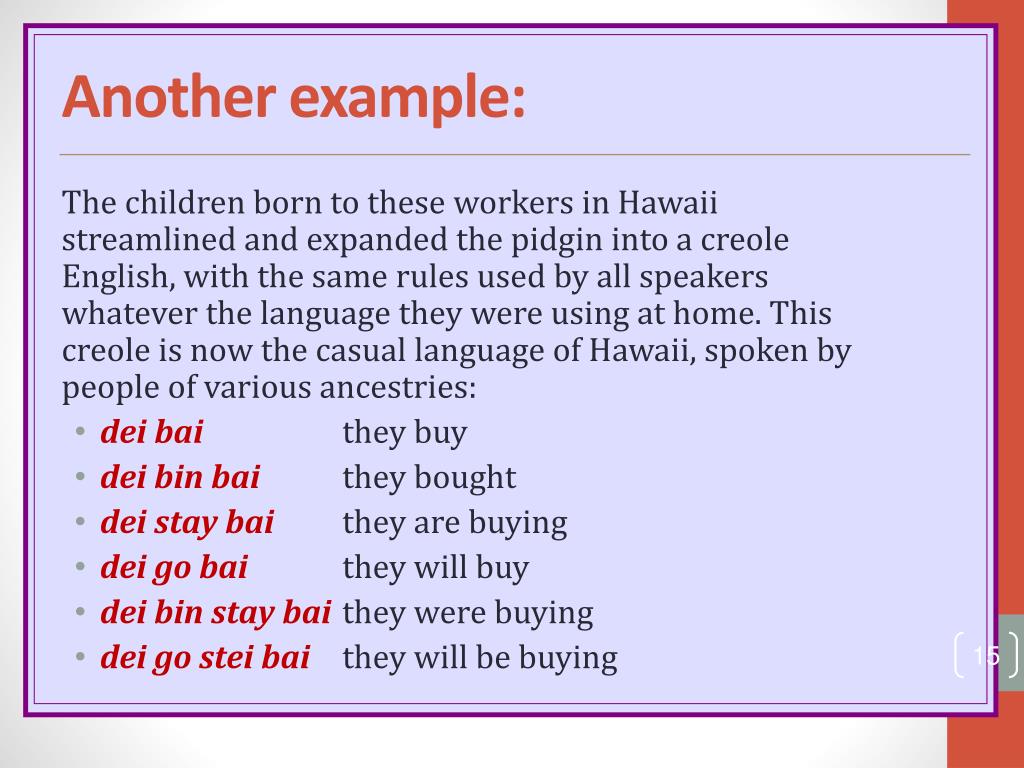

Also the copula “de” is used for locational constructions (“He de for work”).

Singler describes these pidginized language varities as having a vocabulary and grammar that comes from English (grammar is simplified, demonstrated by the absence of inflections such as verb endings) while the pronunciation comes from the speakers first or native language. LPE is often broken down into two subtypes, “Kru Pidgin English” (“Krumen” and “Kru” which refers broadly to sea or crewmen) and “Soldier English” (historically refers to individuals who joined the military or Firestone plantation despite having any formal English training). In the case of Singler’s (1982) taxonomy Liberian Pidgin English is described as the “least standard-like” or the most highly pidginized variety.

5) If the speaker is emotionally involved or excited in what they are saying.3) If the listener displays less-standard like features in their speech.2) If the speaker knows the listener well.1) Less serious and informal occasions or events.These five factors lead to “less standard-like speech” (p.16). Singler (1982) notes that there five factors that influence how and when an individual uses a particular variety. It should also again be noted that these different varieties don’t necessarily infer a lack of fluency in English, as individuals/speakers can be “wholly fluent in each variety” (Singler, 1981, p.19). Hancock (1971) and Singler (1982) refer to these varieties as “idealizations” seemingly borrowing from Weber the notion of “ideal type.” The use of each variety is partly based on context or occasion, though not everyone would use that variety within each specific context. This means that while there are distinct variations of Liberian English, they don’t necessarily make up an entire distinct whole, nor do individuals necessarily represent or use only one of these varieties. As noted in a past post Liberian English/Koloqua should be understood as encompassing a continuum.


 0 kommentar(er)
0 kommentar(er)
